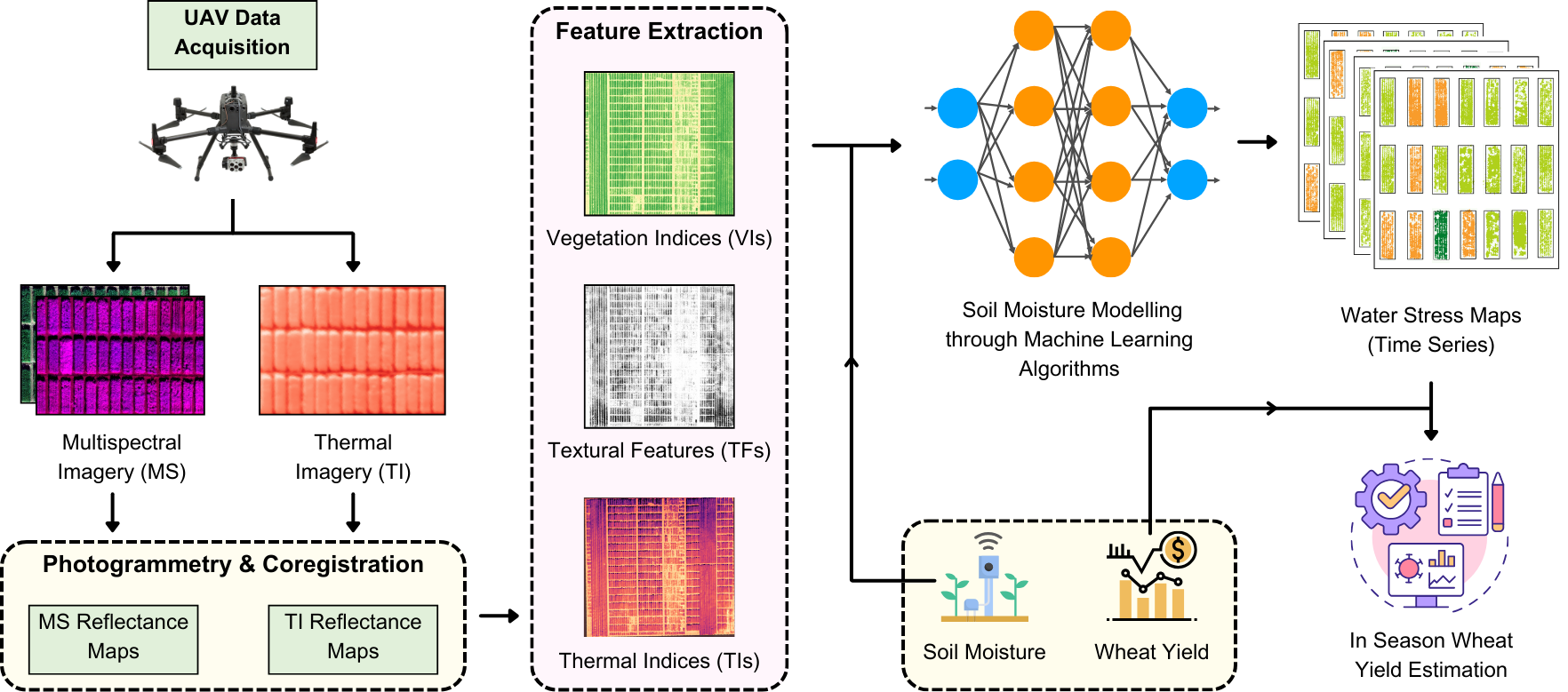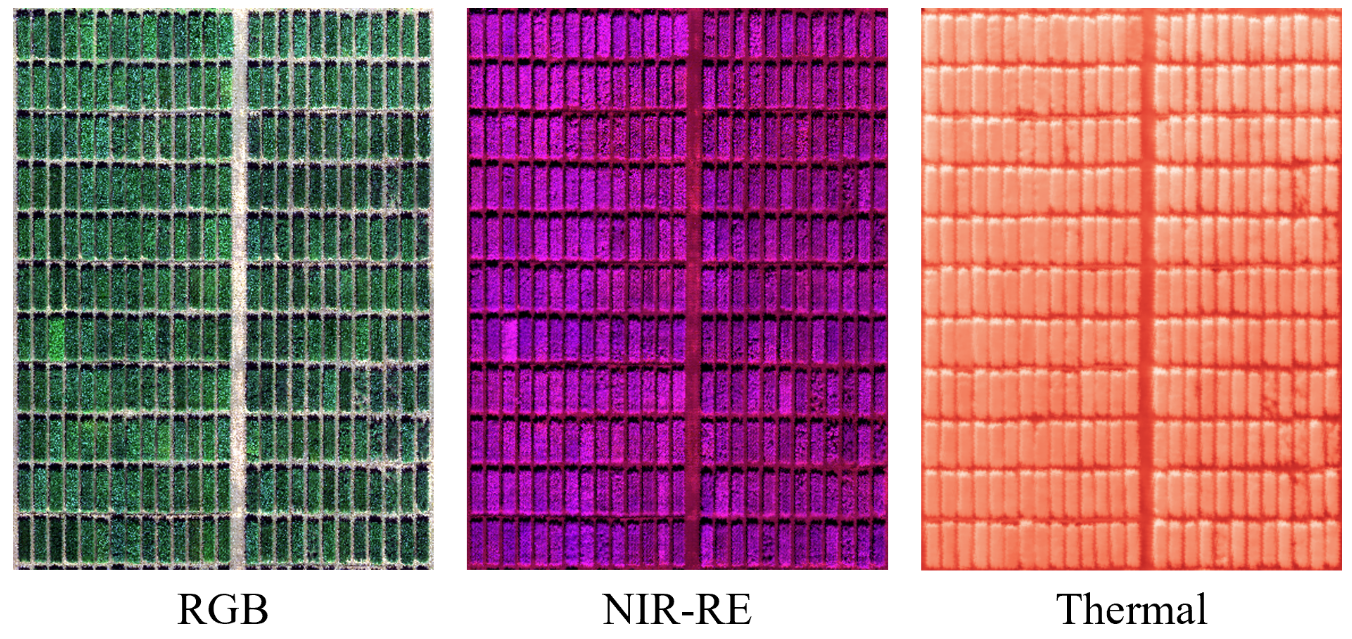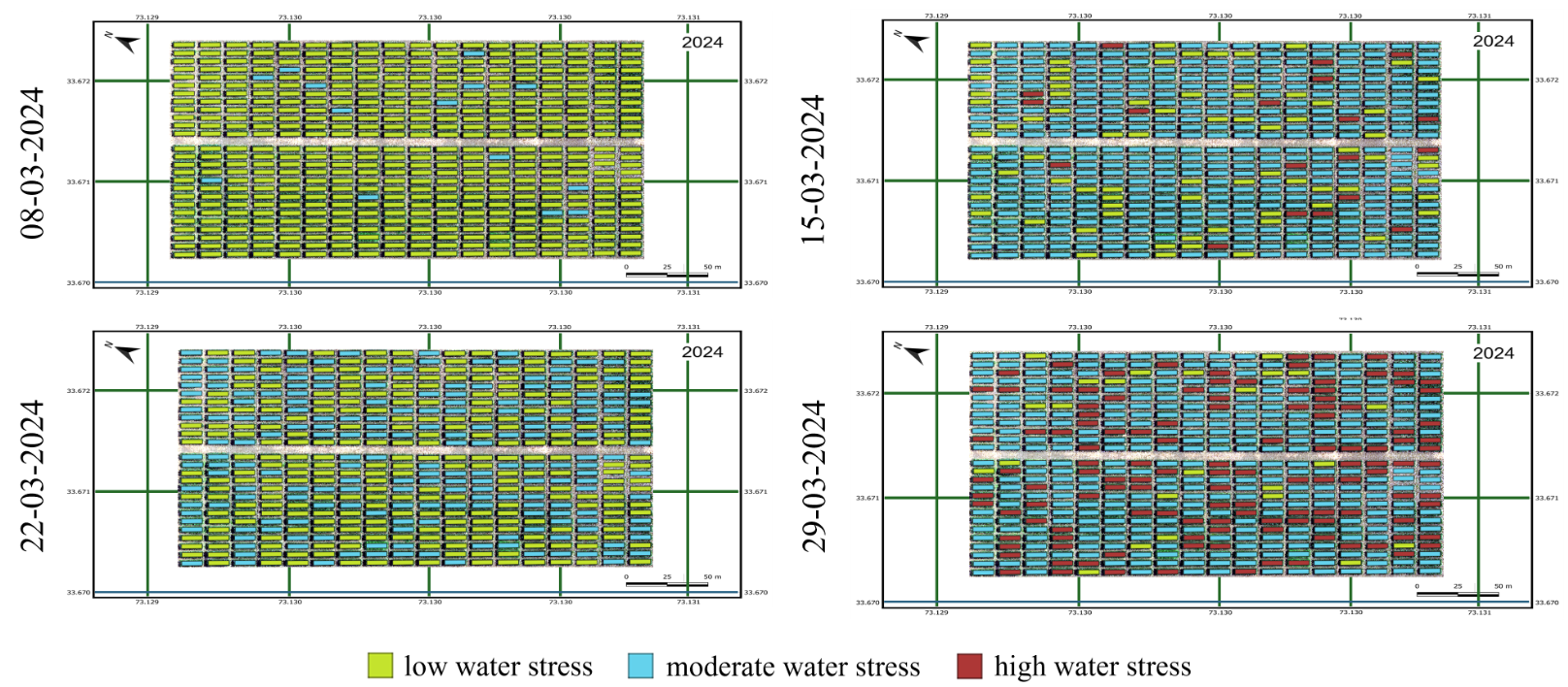Uncovering Abiotic Stress in Winter Wheat Through Multi-Sensor Imagery Fusion
Wheat (Triticum aestivum L.) is one of the most important staple crops worldwide, playing a crucial role in ensuring global food security. A significant proportion of wheat cultivation occurs in rain-fed agricultural systems, which are highly vulnerable to water scarcity and drought stress. Drought remains one of the most critical abiotic stressors, causing substantial reductions in both yield quantity and grain quality. The increasing frequency and severity of droughts, exacerbated by climate change, pose a growing challenge to wheat production systems. Drought stress is characterized by three primary factors: intensity, timing of incidence, and duration. The variability in these factors makes it challenging for plant breeders and agronomists to determine the most effective drought adaptation strategies. The timing of the water deficit is particularly crucial, as water stress at different phenological stages affects wheat productivity differently. Early-season drought can hinder tillering and canopy development, while stress during the reproductive phase can lead to significant reductions in grain fill and final yield. Given these complexities, there is an urgent need for advanced tools and methodologies to monitor drought stress and develop predictive models for mitigating its impact on wheat production.

Recent research efforts have been increasingly directed toward understanding crop responses to a wide array of biotic and abiotic stresses, with a strong focus on water deficit stress. This emphasis is crucial given the anticipated worsening of global water scarcity due to climate change. Insights into drought stress tolerance, particularly regarding physiological and morphological traits, are essential for advancing drought stress monitoring, germplasm screening, and genotypic evaluation. One of the primary objectives in modern plant breeding is the development of drought-resilient wheat genotypes capable of maintaining high grain productivity under unfavorable environmental conditions. Conventional methods for monitoring crop health and estimating yield rely on ground-based surveys, visual assessments, and manual sampling. While these techniques provide valuable insights, they suffer from several limitations, including high labor costs, time constraints, and limited spatial coverage. Moreover, traditional yield prediction models often rely on meteorological data or indirect proxies, such as leaf chlorophyll content, which may not fully capture the dynamic nature of plant-water interactions. These constraints highlight the necessity for data-driven approaches that integrate real-time environmental monitoring with advanced computational models.

This work leverages UAV-borne multispectral and thermal imaging combined with IoT-based soil moisture data to enhance early-season yield estimation in rain fed wheat systems. Specifically, the objectives of this research are: (i) To assess the effectiveness of UAV-based spectral and thermal indices, along with textural features, in predicting early-season wheat yield, (ii) To evaluate the role of soil moisture dynamics in influencing yield outcomes at different growth stages, (iii) To develop a predictive framework that integrates multi-modal remote sensing features for improved yield forecasting, and (iv) To generate spatial distribution maps of predicted yield, enabling the identification of drought-prone areas within the field. This work contributes to the development of data-driven decision support systems for precision agriculture. The integration of UAV-based sensing with AI-driven yield forecasting models presents a novel approach for optimizing water resource management and enhancing wheat productivity under drought-prone conditions.

Faculty
-
Dr. Muhammad Moazam FrazDr. Muhammad Moazam Fraz
-
Dr. Zuhair ZafarDr. Zuhair Zafar
-
Dr. Nazia PerwaizDr. Nazia Perwaiz
-
Dr. Fahad Ahmed SattiDr. Fahad Ahmed Satti
Students
-
Muhammad Ali
-
Usama Athar

